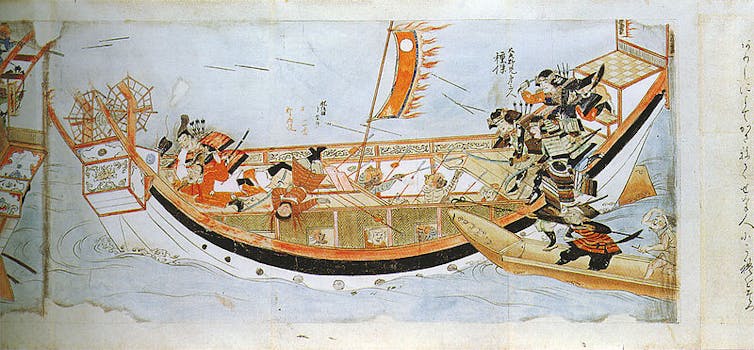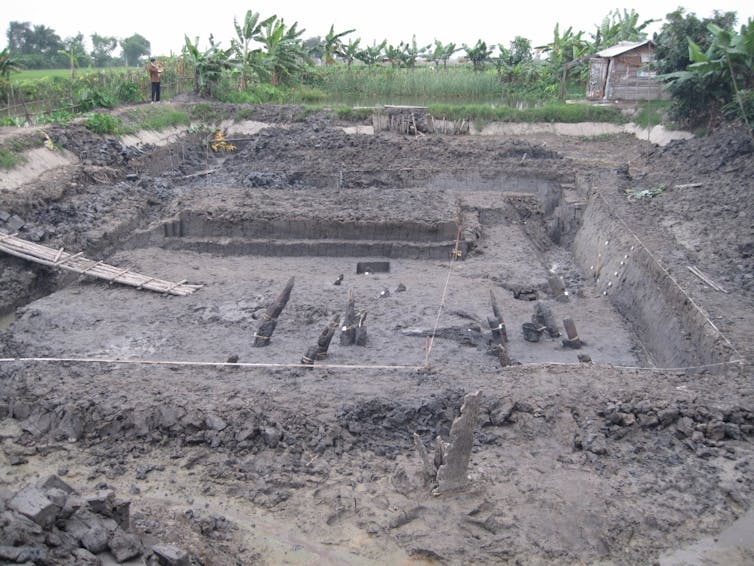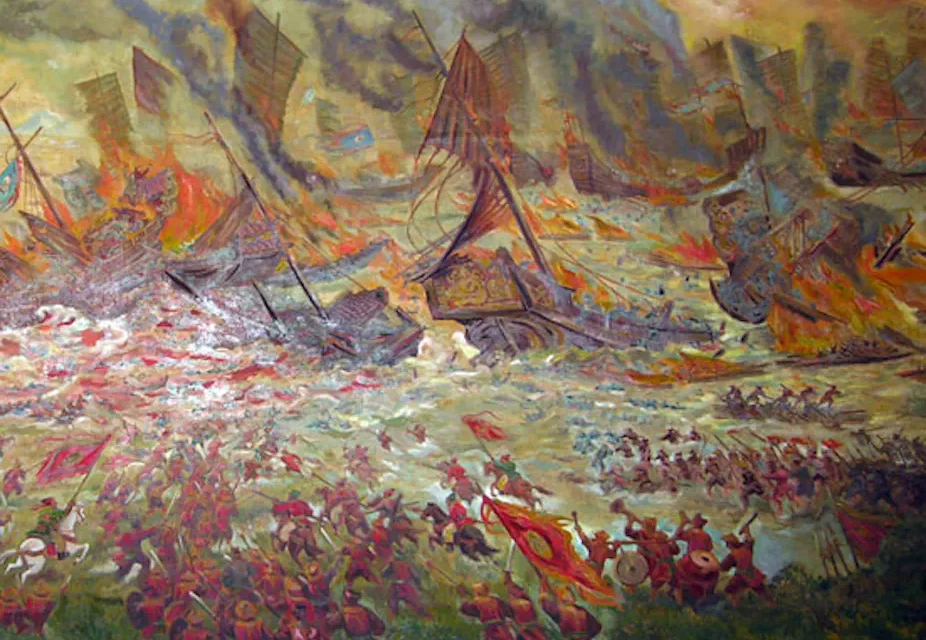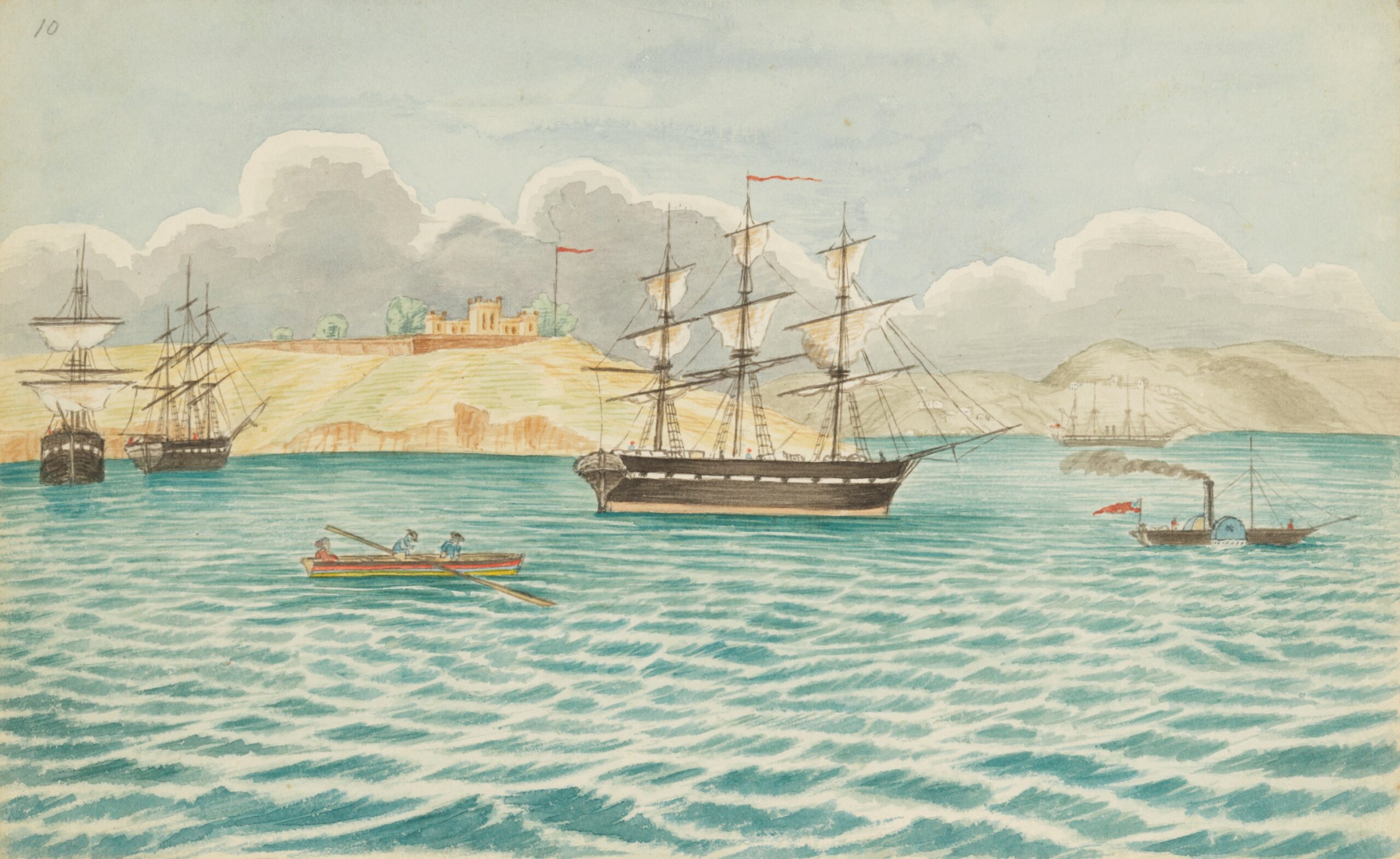Reading time: 4 minutes
Archaeologists from the University of the Ryukyus in Japan have discovered part of a 13th century ship that apparently belonged to Mongolian warlord Kublai Khan.
The ship is believed to be a remnant of a fleet that took part in one of Kublai Khan’s failed attempts to invade Japan, in 1274 or 1281.
By Mark Staniforth, Monash University
The discovery could provide archaeologists and historians with new insights into medieval shipbuilding and about Kublai Khan’s multiple invasion attempts.
The wreck of the 20-metre-long vessel was discovered under 25 metres of water and one metre of sand, in waters off Takashima Island in Matsuura, Nagasaki prefecture.
The archaeologists uncovered a 12-metre-long section of keel and more than 4,000 artifacts, including ceramic shards, bricks used for ballast, cannonballs and stone anchors.
According to lead researcher, Yoshifumi Ikedia, there are no immediate plans to salvage the hull. The first step was to conserve the find by covering the site with nets.
On several occasions, from 1274 AD onwards, Kublai Khan dispatched armies aboard fleets of ships in an attempt to expand the Mongolian empire into East Asia (Japan) and Southeast Asia (Vietnam).
In 1281, he amassed an impressive armada of 4,400 ships carrying at least 140,000 Korean, Mongol and Chinese troops in a second attempt to invade Japan.
But Kublai Khan’s plans were thwarted when a two-day typhoon – known as a kamikaze (or “divine wind”) – hit the Tsushima Strait, apparently destroying approximately 80% of his fleet. Historians believe Kublai Khan’s troops either drowned at sea or were killed on the beaches by samurai.
The shipwreck discovered off Takashima Island is not the first archaeological evidence we have of Kublai Khan’s failed invasions.
Since 2008 an international research team, the Bach Dang Battlefield Research Group – comprised of archaeologists and scholars from around the world (myself included) – has conducted archaeological surveys and excavations at the Bach Dang River in north Vietnam.
We have been investigating the topography, archaeological evidence and later memorials, temples and shrines associated with another historically significant naval battle.

The 1288 naval battle at [Bach Dang](http://en.wikipedia.org/wiki/Battle_of_B%E1%BA%A1ch_%C4%90%E1%BA%B1ng_(1288) occurred after the Mongol invaders captured the capital Thang Long (now Hanoi). They then found themselves trapped in an empty city without supplies.
The invaders decided to abandon the capital and retreat, but the Vietnamese decided to fight a decisive naval battle. The Vietnamese forces, under the command of Tran Hung Dao and his generals, lay in wait for the invasion fleet knowing they would have to return to China through an estuary at the mouth of the Bach Dang River.
Tran Hung Dao had his men plant wooden stakes in the bed of the Bach Dang River to create a line of defence so the Mongols could not retreat.
As the fleet entered the mouth of the river, a few small boats engaged the enemy. When the tide ebbed, the fleet was thrown on to the wooden stakes.
Tran Hung Dao was victorious and many of the Mongol ships (perhaps hundreds) were burned or lost during the battle.
In 2009, the Bach Dang Battlefield Research Group conducted an extensive survey in Quang Yen town – where the Bach Dang River used to meet the sea – and on nearby Ha Nam Island.

Our research group mapped the defensive stakes at the riverside Dong Ma Ngua site and excavated a small area to examine the soil profile.
Fieldwork at the Dong Ma Ngua site has since yielded a large number of artefacts, including 55 stakes and other wooden fragments, pottery (ceramic and stoneware), bricks and tiles. A broken oar most probably associated with a small boat was also unearthed.
A remote sensing survey, core sampling and limited test excavations will hopefully uncover stake yards buried below several meters of silt. These stake yards are likely to still be in excellent condition – the silt preserving the original configuration of the stakes.
These ongoing investigations in Vietnam, and the new discovery off the coast of Japan, are providing valuable historical information about the Mongols’ attempted invasions.
Our research group will present its findings (thus far) at the inaugural Asian Academy for Heritage Management Asia-Pacific Regional Conference on Underwater Cultural Heritage next week.
This article was originally published by The Conversation.
Podcasts abou Mongol invasions of Japan:
Articles you may also like:

More than a century on, Gallipoli campaign should be more than just a symbol of futility
Reading time: 6 minutes
But the Gallipoli campaign’s result was especially troubling even at the time. Memorial services were held in April 1916 on the first anniversary of the initial landings. Subsequently, this anniversary has acquired special significance as Anzac Day, helping to shape and mark the transformation of Australia and New Zealand from British dominions to independent nations. And Gallipoli has become almost as notorious in British memory as the Somme and Passchendaele in symbolising the carnage of the war. The point is not simply the scale of the losses. It is also the fact that the campaign was so obviously a resounding defeat. What could have been more futile?

What lies behind the war in Tigray?
Reading time: 7 minutes
At the core of the current war between the Ethiopian central government and the Tigrayan People’s Liberation Front is the realignment of politics and the contest for political hegemony. In my view, it is about Prime Minister Abiy Ahmed allying with the Amhara to destroy Tigrayan power. This is an attempt to consolidate his position and that of his Amhara supporters.
The text of this article is republished from The Conversation in accordance with their republishing policy and is licenced under a Creative Commons — Attribution/No derivatives license.









